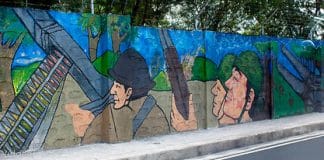Street art has long been a powerful form of expression in the Philippines, with its vibrant colors, intricate designs, and bold messages adorning the walls and streets of cities and towns across the country. From political statements to social commentary, street art has provided a voice for the marginalized and the oppressed, giving them a platform to share their stories and opinions with the world.
But in recent years, street art has transcended its humble origins on the streets and has made its way into galleries and museums, where it is being celebrated and appreciated as a legitimate form of art. This transformation from the streets to the galleries has had a profound impact on the art scene in the Philippines, as it has helped to challenge traditional notions of what constitutes art and who gets to be considered an artist.
One of the most notable examples of this shift is the rise of street art festivals and events in the Philippines, such as the annual Art BGC Mural Festival in Bonifacio Global City, Manila. These events bring together local and international street artists to create stunning murals and installations that not only beautify the urban landscape but also provoke thought and inspire conversation on important social issues.
The recognition of street art as a legitimate art form has also opened up new opportunities for Filipino street artists to showcase their work on a global stage. From participating in international art fairs to collaborating with renowned artists from around the world, Filipino street artists are making a name for themselves and gaining recognition for their unique and powerful creations.
Moreover, the inclusion of street art in galleries and museums has helped to democratize the art world, making it more accessible to a wider audience. By bringing street art indoors, galleries and museums are breaking down barriers and challenging the notion that art is only for the elite or the privileged. Anyone, regardless of their background or socio-economic status, can now experience and appreciate the beauty and creativity of street art.
In conclusion, the impact of street art in the Philippines cannot be overstated. From its origins on the streets as a form of protest and rebellion to its newfound status as a respected and celebrated art form in galleries and museums, street art has helped to elevate the voices of the marginalized and the oppressed, challenge traditional notions of art, and democratize the art world. As Filipino street artists continue to push boundaries and break down barriers, the impact of street art in the Philippines will only continue to grow and evolve, inspiring future generations of artists and art enthusiasts alike.





